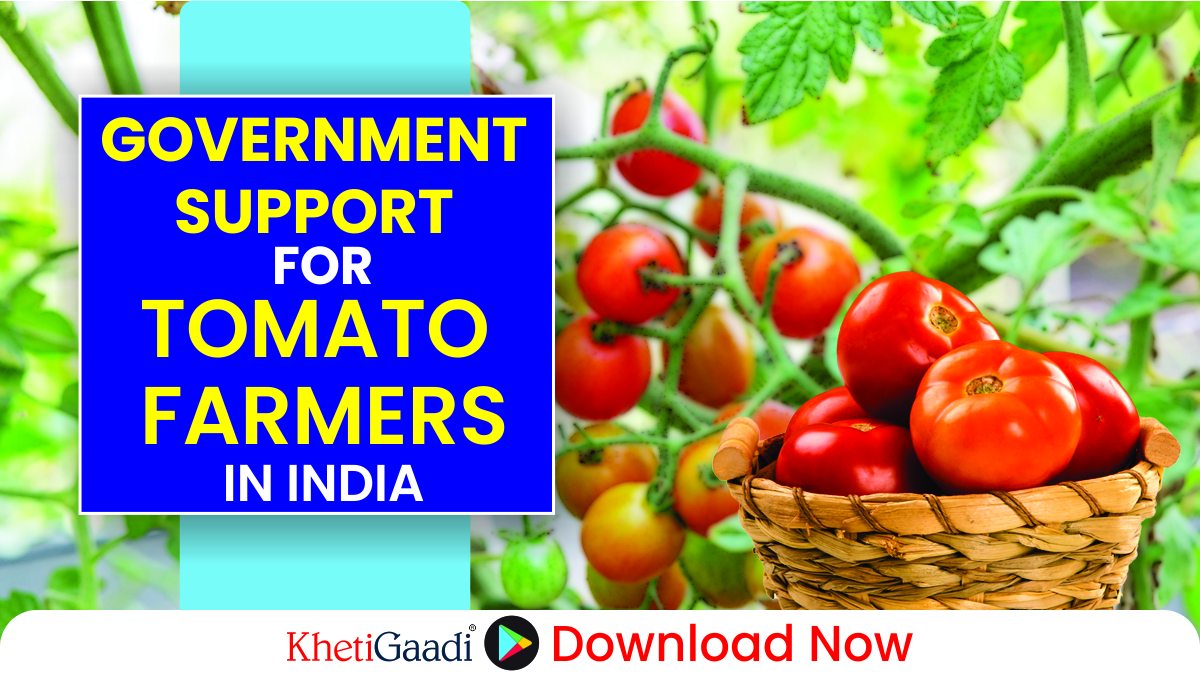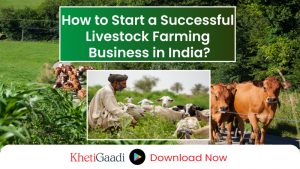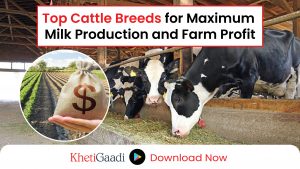Tomato Farming Tips: Key Practices for High Yield and Profitability
Tomato farming is one of the most profitable ventures for Indian farmers. Known for its versatility, the tomato is widely consumed in households and industries. This comprehensive guide to Tomato Farming in India, Tips, Schemes, and Market Trends will guide you through the essentials of tomato cultivation, government schemes and subsidies available for farmers, and a price trend analysis across the country.
Introduction to Tomato Farming
Tomatoes are a high-demand crop due to their consistent usage in cooking, processing, and export. They are cultivated across India in various agro-climatic zones, making them accessible throughout the year.
Tomato prices often fluctuate, but with the right cultivation techniques, farmers can ensure a steady income. To maximize profitability, farmers need to choose high-yield varieties, use modern farming practices, and take advantage of government schemes.
Soil Requirements and Preparation
The success of tomato farming begins with selecting the right soil.
- Ideal Soil: Sandy loam soil with good drainage and high organic matter is most suitable for tomato cultivation.
- pH Levels: Tomatoes grow best in soils with a neutral pH. Acidic soils can be corrected by adding lime (3–4 quintals per hectare) every three years.
- Drainage: Proper drainage is essential to prevent waterlogging, which can harm plant growth.
Planting Techniques
Tomatoes can be cultivated during the Kharif (July-August) and Rabi (November-December) seasons.
Spacing and Planting
- Row Spacing: Maintain a distance of 60 cm between rows.
- Plant Spacing: Leave 45–60 cm between each plant.
- Timing: Transplanting should ideally be done in the evening to reduce transplant shock.
- Seed Requirements
- Improved Varieties: 350–400 grams of seeds per hectare.
- Hybrid Varieties: 200–250 grams of seeds per hectare.
- Certified Seeds: Always purchase seeds from certified sources to avoid losses due to inferior quality seeds.
Fertilizer Management
Proper fertilization ensures a good yield.
For Improved Varieties:
- Nitrogen: 100 kg/ha.
- Phosphorus: 60 kg/ha.
- Potash: 60 kg/ha.
For Hybrid Varieties:
- Nitrogen: 213 kg/ha.
- Phosphorus: 240 kg/ha.
- Potash: 250 kg/ha.
Use mixed fertilizers or ammonium sulphate during planting, and urea for top dressing.
Best Tomato Varieties in India
Choosing the right variety is critical for profitability.
Improved Varieties: Pusa Divya, Pusa Ruby, Pusa Sheetal, Arka Saurabh, Arka Vikas.
Hybrid Varieties: Pusa Hybrid 1, Pusa Hybrid 2, Pusa Hybrid 8.
These varieties are known for their high yield and disease resistance.
Pest and Disease Management
Common pests like leaf curl virus, fruit borers, and fungal infections can reduce yields.
Regular monitoring and use of organic pesticides or integrated pest management (IPM) techniques are recommended.
Avoid waterlogging, as it can lead to root rot.
Government Schemes and Subsidies for Tomato Farming
The Indian government supports tomato farmers through various initiatives:
- PM-Kisan Scheme: Provides direct income support to farmers for inputs like seeds and fertilizers.
- Mission for Integrated Development of Horticulture (MIDH): Offers subsidies for drip irrigation, seed procurement, and cold storage facilities.
- Rashtriya Krishi Vikas Yojana (RKVY): Encourages farmers to adopt advanced technologies in farming.
- National Horticulture Board (NHB): Provides financial assistance for post-harvest management and marketing.
Farmers can visit the National Horticulture Board for more information on these schemes.
Price Trends of Tomatoes Across Regions
Tomato prices vary significantly across India due to factors like transportation, demand, and seasonality. Here’s a snapshot of the price trends (₹ per kg):
| Region | Price Range Per Kg (₹) | Remarks |
| North | 20–50 | Higher demand in winter months. |
| South | 15–40 | Major production zone. |
| East | 25–55 | Dependent on imports from the West. |
| West | 18–45 | A key supplier for other regions. |
(Source: Local Market Surveys, November 2024)
Post-Harvest Management and Marketing
Proper handling and storage of tomatoes are essential to maximize profits:
- Use cold storage facilities to reduce spoilage.
- Grade tomatoes based on size and quality for better market pricing.
- Leverage digital platforms like eNAM for direct marketing.
Success Stories of Profitable Tomato Farming in India
Tomato farming has transformed the lives of many farmers, showcasing the immense potential of this crop when modern techniques and resources are effectively utilized. Below are three inspiring stories of farmers who achieved remarkable success in tomato cultivation.
1. From Struggles to Success: The Journey of Venkatesh, Andhra Pradesh
Region: Chittoor, Andhra Pradesh
Key Highlights: Adoption of Drip Irrigation and High-Yield Hybrid Seeds
Venkatesh, a small-scale farmer in Chittoor, faced severe losses due to unpredictable weather and declining yields. In 2020, he decided to adopt drip irrigation under the Mission for Integrated Development of Horticulture (MIDH) scheme, which subsidized 50% of the system cost.
By switching to hybrid varieties like Arka Vikas, known for high yields and disease resistance, Venkatesh observed a significant improvement in productivity. With proper fertilization and pest management, his yield increased from 18 tons to 28 tons per hectare within a year.
He began selling his tomatoes directly to markets through eNAM (National Agriculture Market), eliminating middlemen and fetching better prices. Today, Venkatesh earns approximately ₹3.5 lakhs per acre annually, a stark contrast to the ₹1.2 lakhs he made earlier.
2. Woman Farmer Turns Entrepreneur: Savita Devi, Maharashtra
Region: Nashik, Maharashtra
Key Highlights: Value Addition and Market Linkages
Savita Devi, a woman farmer in Nashik, transitioned from traditional tomato farming to a profitable agribusiness. Initially struggling with fluctuating market prices, she enrolled in a government-sponsored skill development program under the Rashtriya Krishi Vikas Yojana (RKVY).
Savita learned about value-added products like tomato puree, sauces, and ketchup. With a loan of ₹2 lakhs under the Agriculture Infrastructure Fund, she set up a small processing unit on her farm. By selling processed products alongside fresh tomatoes, her annual income surged from ₹4 lakhs to over ₹10 lakhs.
Savita also formed a self-help group (SHG) in her village, enabling other women to replicate her success. Her story has inspired many to explore agri-entrepreneurship as a viable livelihood option.
3. Leveraging Technology: Manoj Singh, Uttar Pradesh
Region: Mirzapur, Uttar Pradesh
Key Highlights: Organic Tomato Farming and Precision Agriculture
Manoj Singh, a progressive farmer from Mirzapur, transformed his two-acre farm into an organic tomato farm. Concerned about declining soil health, he switched to organic farming practices with support from the Paramparagat Krishi Vikas Yojana (PKVY), which provided financial aid for composting units and organic inputs.
Manoj used precision agriculture technologies, including soil health cards and remote sensing apps, to optimize fertilizer and water use. By marketing his organic tomatoes as a premium product, he secured contracts with local supermarkets and online platforms.
The switch to organic farming increased his profit margin by 40%. Manoj now earns ₹6 lakhs per acre, proving that sustainable farming practices can also be highly profitable.
Conclusion
Tomato farming offers immense potential for profitability with the right practices and support. By adopting high-yield varieties, utilizing government schemes, and staying updated on market trends, farmers can significantly increase their income.
Reference Links:
Tags:




